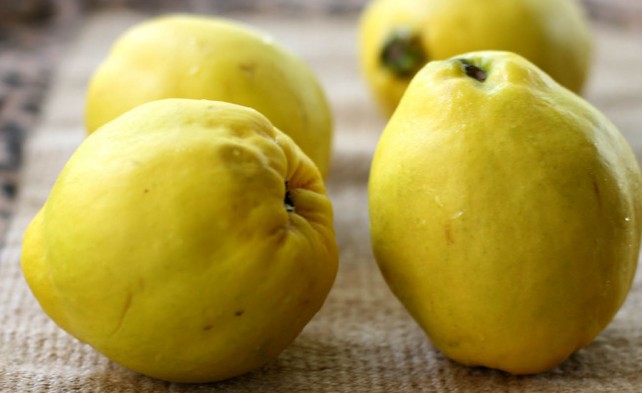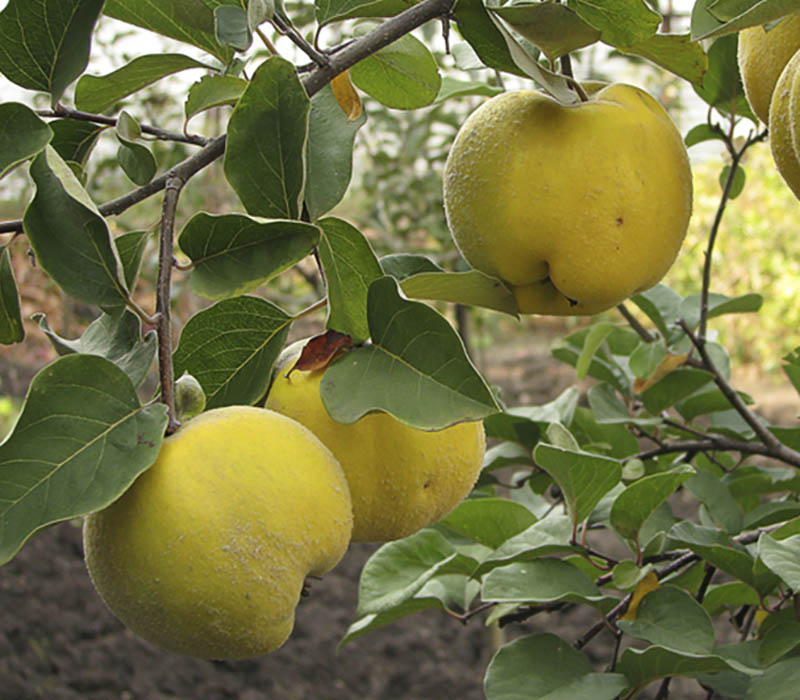There are many ways to process quinces. Here you will find inspiration on how to prepare the stone fruit in a variety of ways – be it as quince jelly, syrup or jam.
You can classify quinces visually and tastefully between pears and apples. They are a pome fruit that has almost been forgotten – unfortunately, because the sun-yellow fruits are not only healthy, but also versatile. In Germany they are in season from October to November. After harvesting, you can store them refrigerated for up to eight weeks. We recommend that you buy the fruit in organic quality – this way you support environmentally friendly agriculture without chemical-synthetic pesticides.
Uncooked, the fruit tastes bitter, so you shouldn’t eat quince raw. You can process them in many ways and thus preserve the fruits beyond the autumn and winter.
Here are some inspirations on how to use quince:
Quince compote
quince syrup
quince juice
quince bread
Quittengelee
quince jam
Process quinces into quince compote

You can process quinces into a delicious compote that goes well with all kinds of desserts – for example waffles, ice cream or pudding. The basic quince compote recipe only requires three ingredients—quince, water, and sugar—but you can vary it to taste, like adding spices. Quince compote can be preserved in mason jars for a long time. You can also use the quinces to make a fresh dessert compote without boiling them down.
Process quinces into quince syrup
With quince syrup you can not only mix a refreshing drink, but also refine desserts. Try quince syrup as a topping for ice cream or Christmas cookies, for example. To process quinces into syrup, you only need a few ingredients. However, this requires a few more steps than, for example, quince compote: After you have cooked the quinces, you must first pass the mass through a sieve before you can boil it again and then bottle it. The quince syrup will keep for up to several months.
Process quinces into quince juice
You can enjoy quince juice pure, add water or use it as a base for a Christmas punch. If you want to process quinces into juice, the pulp will remain after you have strained the cooked quince mass. But you don’t have to throw away this fruit puree. You can use it further and process it into quince jelly, for example (see recipe below). This way you avoid unnecessary food waste. The quince juice will keep for up to a year.
Process quinces into quince bread
Contrary to its name, quince bread is not actually bread, but a type of confection. Especially around Christmas time, the fruit is often used to make sweet quince bread, but the fruit jelly is also a delicious delicacy throughout the rest of the year. If you want to do without white industrial sugar, you can also prepare the quince bread with honey. But you have to be patient if you want to enjoy quince bread: After preparation, the confectionery has to dry for a few days.
Process quinces into quince jelly
Quince jelly tastes wonderful with home-baked bread or rolls. But you have to invest some time before you can taste the honey-colored jelly. The quince jelly has to simmer for about five hours. After that you have to strain it before you boil it again. After that, pieces of quince remain, but you can use them. Simply process the pieces of quince with a few soaked dates and cinnamon into a fruity quince purée.
Process quinces into quince jam

In contrast to quince jelly, quince jam is a faster and therefore more energy-saving way of processing quince. Because while the latter has to simmer for five hours and consumes a lot of energy, quince jam is ready after about 20 minutes. By the way, you don’t have to throw away the seeds that you haven’t cooked: you can use them to make a tea that’s good for your digestion. To do this, simply pour hot water over one or two teaspoons of the seeds and let them steep for about ten minutes.
